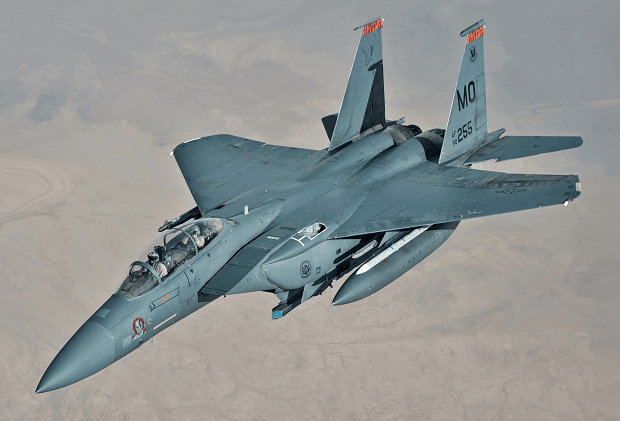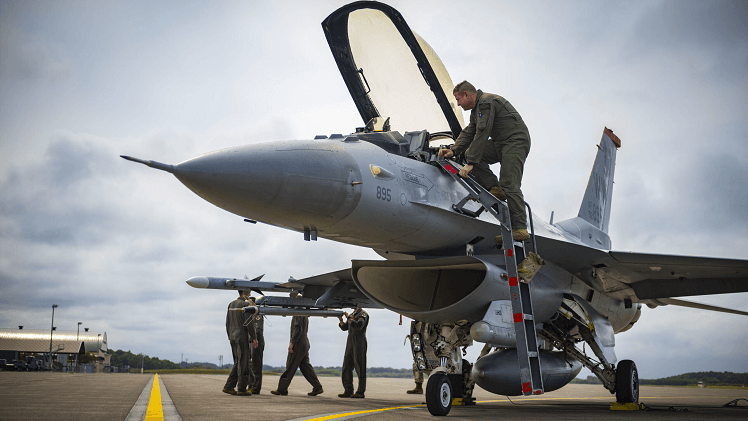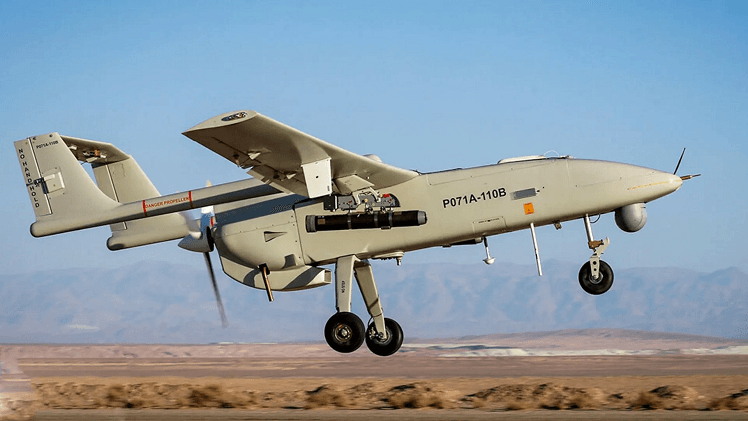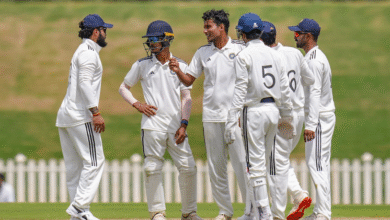US Fighter Pilots vs Iranian Drones: A Comprehensive Analysis

Modern warfare has entered a transformative era, marked by rapid advancements in technology and evolving strategies. One of the most intriguing aspects of this cashstark com evolution is the growing prominence of unmanned aerial vehicles (UAVs), or drones, in conflict zones. A particularly compelling scenario is the interplay between highly skilled US fighter pilots and the increasingly sophisticated Iranian drones. This article delves into their capabilities, strategies, and implications for future combat scenarios. US Fighter Pilots vs Iranian Drones.
Introduction to Aerial Combat Evolution
The Rise of Drones
Drones have revolutionized modern warfare. Initially deployed for surveillance, they now perform diverse roles, including precision strikes, electronic warfare, and supply deliveries. Iranian drones, in particular, have garnered global attention for their operational versatility and cost-effectiveness. These UAVs, often used in asymmetric warfare, have disrupted traditional combat paradigms.
Traditional Fighter Pilots in Modern Warfare
US fighter pilots, however, remain a cornerstone of aerial superiority. Equipped with extensive training and operating state-of-the-art aircraft, they bring unmatched strategic thinking and adaptability to the battlefield. Despite the rise of drones, the human element continues to play a critical role in mission success.
Capabilities of US Fighter Pilots

Advanced Training Regimens
US fighter pilots undergo rigorous training programs that emphasize physical endurance, mental acuity, and technical expertise. Key aspects of their training include:
- Simulated Combat Scenarios: Replicating real-world threats for effective preparation.
- Dogfight Techniques: Mastering air-to-air combat strategies.
- Advanced Targeting Systems: Utilizing cutting-edge technologies like helmet-mounted displays.
Cutting-Edge Aircraft and Technology
US pilots operate some of the most advanced fighter jets in the world, such as the F-22 Raptor and F-35 Lightning II. These aircraft feature:
- Stealth Capabilities: Reducing detectability by enemy radars.
- Supersonic Speeds: Enhancing engagement and evasion.
- Advanced Sensors: Providing unparalleled situational awareness.
Key Attributes of US Fighter Pilots
- Adaptability: Pilots are trained to handle diverse and unpredictable combat scenarios, making them effective in dynamic battlefield conditions.
- Teamwork: Effective coordination with ground forces, AWACS (Airborne Warning and Control System), and other aerial units enhances mission success rates.
- Experience: Many US pilots have years of real-world combat experience, further sharpening their decision-making and tactical execution.
Iranian Drones: Strengths and Limitations

Key Models and Specifications
Iran has developed a range of drones tailored for various combat roles. Notable examples include:
- Shahed-136: A loitering munition with long-range strike capabilities. The Shahed-136 is a delta-wing UAV designed for kamikaze missions. It boasts an estimated range of up to 2,500 kilometers and is capable of carrying an explosive payload of approximately 40 kilograms. This drone is primarily used for precision strikes on static targets, making it a key asset in asymmetric warfare.
- Mohajer-6: A medium-altitude drone equipped with electro-optical and infrared sensors for surveillance and strike missions. It can carry up to four precision-guided munitions.
- Ababil Series: These include the Ababil-2 and Ababil-3, widely used for reconnaissance and attack roles. Known for their affordability, they allow for mass deployment.
Tactical Deployments
Iranian drones have been used extensively in proxy conflicts and regional skirmishes. Their strategic advantages include:
- Cost-Effectiveness: Enabling mass deployment.
- Asymmetric Warfare: Countering technologically superior adversaries.
- Persistent Surveillance: Gathering real-time intelligence.
Key Features of Iranian Drones
- Swarm Capability: The ability to deploy multiple drones simultaneously, overwhelming enemy defenses.
- Autonomy: Certain models have limited autonomous navigation capabilities, reducing dependency on direct operator control.
- Proliferation: Iran has exported its drone technology to allied groups and nations, extending its strategic reach.
However, limitations such as vulnerability to electronic jamming, limited payload capacity, and reliance on pre-programmed routes pose challenges.
Comparative Analysis: US Fighter Pilots vs Iranian Drones
Speed and Agility
US fighter jets significantly outperform drones in terms of speed and maneuverability. This enables pilots to intercept targets rapidly and execute complex aerial maneuvers.
Intelligence and Decision-Making
While drones rely on AI algorithms and remote operators, fighter pilots bring intuitive decision-making and adaptability. Human pilots can respond dynamically to unforeseen challenges, a critical advantage in high-stakes scenarios.
Survivability and Mission Success
Fighter jets are equipped with countermeasures to evade threats, such as chaff and flares. In contrast, drones, though harder to detect, are more expendable and less capable of defending themselves.
Challenges and Opportunities in Combat
Counter-Drone Measures
The US military employs various countermeasures to neutralize Iranian drones, including:
- Electronic Warfare: Jamming communication links and GPS signals.
- Kinetic Solutions: Using missiles and laser systems to destroy UAVs.
- Cyber Attacks: Disrupting drone operations remotely.
Ethical Considerations
The use of drones raises ethical questions, such as collateral damage and the accountability of autonomous systems. Striking a balance between operational effectiveness and moral responsibility remains a pressing concern.
Who Would Win? A Hypothetical Analysis
While the outcome of a direct confrontation between US fighter pilots and Iranian drones would depend on numerous variables, some factors offer a clear indication of the likely victor:
- Technological Superiority: US fighter jets, such as the F-22 and F-35, are equipped with unmatched capabilities in speed, stealth, and advanced weaponry. These advantages make them highly effective against UAVs.
- Adaptability of Pilots: The decision-making and adaptability of US pilots provide a strategic edge, enabling them to counter drone tactics dynamically.
- Limitations of Iranian Drones: While cost-effective and effective in certain scenarios, Iranian drones are vulnerable to electronic warfare and lack the sophistication to outmaneuver advanced fighter jets.
Likely Outcome
In a large-scale conflict, the US is expected to dominate in direct engagements due to its superior technology, training, and resources. However, Iranian drones could pose significant challenges in asymmetric warfare, disrupting operations through persistent strikes and surveillance.
Future of Aerial Warfare
AI and Automation
Artificial intelligence is set to redefine aerial combat. Autonomous drones capable of real-time decision-making could complement manned aircraft, creating a hybrid battlefield dynamic.
Geopolitical Impacts
The proliferation of drones and advanced fighter jets will influence global power structures. Nations investing in drone technology and pilot training will likely gain a strategic edge in future conflicts.
FAQs: Key Insights about US Fighter Pilots vs Iranian Drones
What makes US fighter pilots superior to drones?
US fighter pilots excel in adaptability, strategic thinking, and operating advanced aircraft, giving them an edge over AI-driven drones.
How effective are Iranian drones in combat?
Iranian drones are effective in asymmetric warfare and surveillance but face challenges against advanced countermeasures.
Can drones replace fighter pilots entirely?
While drones offer significant advantages, they lack the decision-making capabilities and versatility of human pilots. A combined approach is likely the future.
What countermeasures are used against drones?
Countermeasures include electronic jamming, kinetic strikes, and cyber operations to neutralize UAV threats.
What role will AI play in future aerial combat?
AI will enhance drone autonomy and decision-making, potentially shifting the dynamics of warfare toward unmanned systems.
Conclusion
The contest between US fighter pilots and Iranian drones represents the broader evolution of modern warfare. While drones bring innovation and efficiency, the skill and intuition of human pilots remain irreplaceable. By leveraging both manned and unmanned technologies, future combat scenarios will likely achieve a new level of complexity and effectiveness.




